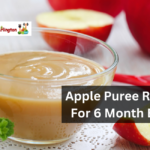Lemon icing is like sunlight for your cake, bringing a rush of acidic sweetness to each bite. Whether you’re making a simple pound cake or a decadent lemon dessert, a well-prepared lemon glaze may elevate it to new heights.
In this article, we’ll show you how to make the perfect lemon glaze recipe that’s not only simple but also delicious.
Recipe For Lemon Glaze For A Cake
Ingredients
Powdered Sugar: This finely milled sugar is utilized in glazes and icings because of its small grain size.
Fresh Lemon: The zest will add flavor to the glaze, and the juice will thin it out.
Milk: Use milk to thin out this mixture to the desired consistency. Milk also contributes to the glaze’s richness and creaminess.
How To Make An Immediate Lemon Glaze?
Combine the following ingredients: Whisk together the powdered sugar, lemon zest, lemon juice, and milk in a mixing basin.
Adjust consistency: Make the glaze thicker by adding additional powdered sugar or thinner by adding milk one teaspoon at a time until the desired consistency is obtained.
How To Store And Keep Lemon Glaze?
Refrigerate any remaining glaze in a firmly sealed container for up to a week. Allow the refrigerated glaze to come to room temperature before whisking it together, or heat it in a microwave until it has a pourable consistency.
Nutrition Facts
- Serving Size: 1 tablespoon
- Calories: 60
- Sugar: 14.8 g
- Sodium: 0.4 mg
- Fat: 0 g
- Saturated Fat: 0 g
- Carbohydrates: 15.3 g
- Fiber: 0 g
- Protein: 0 g
- Cholesterol: 0 mg
Tips For Making The Perfect Lemon Glaze
If you want to add another layer of flavor to the lemon, sprinkle a pinch of salt into the mix immediately.
You’ve probably heard your own thoughts on salt in icings, like your Buttercream Icing / Frosting Recipe.
You’ll find that salt is required to reduce the sugar taste and give complexity beyond the overwhelming sweet rush. Depending on how salty your butter is, use only a pinch.
Microwave on high for 45 seconds after adding the butter.
Remove the measuring cup from the oven and whisk until smooth, checking sure there are no lumps.
Allow it to sit for a few minutes before pouring it over your product. This would be fantastic on scones, cakes, and bundts, as well as anything else that calls for a lemon glaze.
Lemon Glaze Varieties
Meyer lemon juice, lime juice, key lime juice, grapefruit juice, orange juice, tangerine juice, or mandarin juice are all good options.
(Finely cut) lemon zest or other citrus zest.
Before it hardens, sprinkle with crushed nuts or toasted coconut flakes.
Problems With This Lemon Glaze
If your glaze is watery, you’ve used too little icing/powdered/confectioners sugar.
Because it can become quite packed together in the bags that it arrives in, someone who uses 2 cups of packed icing sugar will obtain a totally different result than someone who uses 2 cups of loosely packed or sifted confectioners sugar.
Instead of using lemon juice to enhance the flavor, use as little lemon zest as possible. It really brings out the lemon flavor!
How To Use Lemon Glaze?
Pour or sprinkle the glaze over any baked good that has cooled to room temperature. (Do not add it while the baked items are still hot. The glaze will melt if you do!)
- Loaf cakes, such as this lemon yogurt cake or a plain pound cake.
- Scones, such as these vegan raspberry scones or these blueberry scones.
- Cookies, such as my vegan sugar cookies or lemon shortbread cookies.
- Also, vegan lemon muffins, blueberry muffins, and strawberry muffins.
Making lemon glaze is similar to having a secret weapon in your baking armory. A plain cake may be transformed into a zesty pleasure with just a few ingredients and a few simple procedures. So, the next time you bake, make this delicious lemon glaze to give an extra layer of taste and elegance to your sweet creations.
Thanks for reading. I hope you find it helpful.










